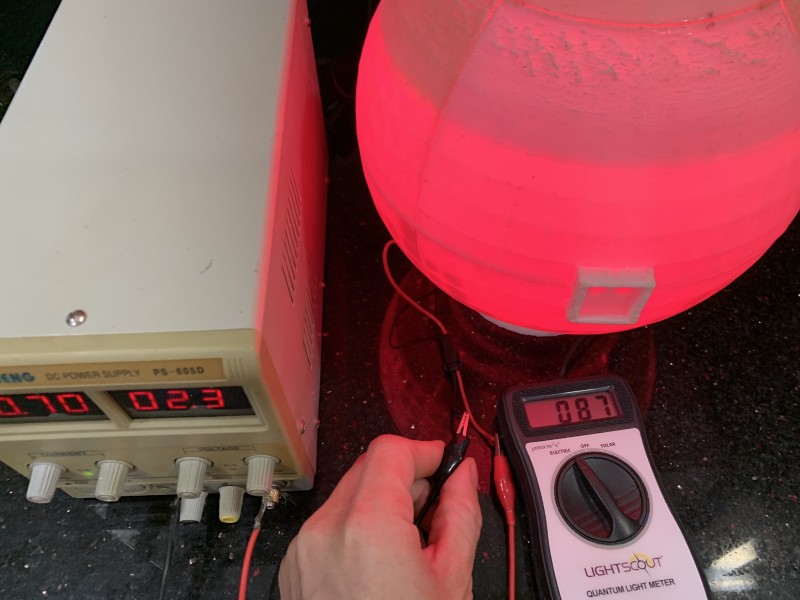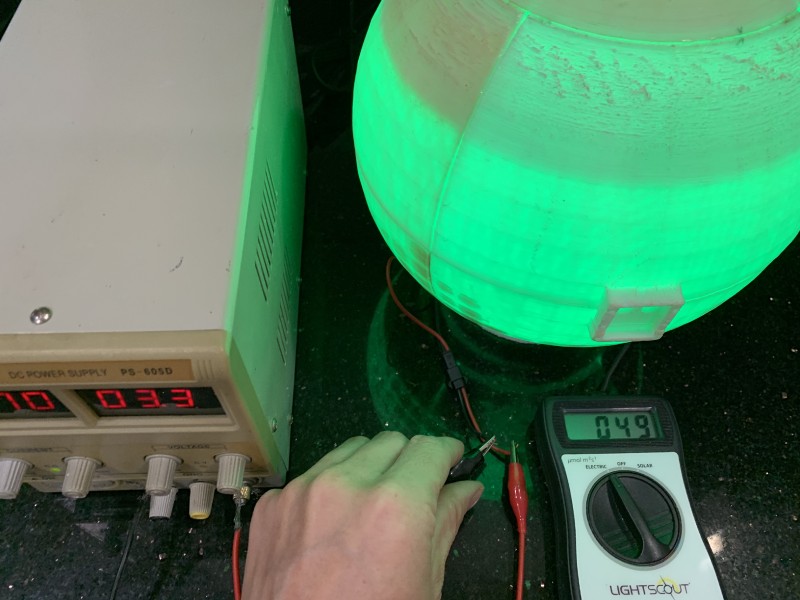Penetration is not a function of pushing photons through the canopy . A diffuse light with multiple point sources will have a much better canopy penetration do to so many incident angles of light. When I'm in the sun I have a shadow. If I stand in a room full of lights I don't...... Focusing light down with optics doesn't promote penetration.
Penetration is a function of how well light intensity is maintained over distance. It is also a function of how well light travels through chloroplasts and how many layers of leaves it can illuminate. The more energy that penetrates through a leaf (upper and lower chloroplasts), the more can be absorbed. Thank you for again showing you have no idea what you're speaking about and are simply trying to justify the lack of development and technology in your own products. And for someone who talks so much about umol/joule, you sure seem to know nothing about PAR or PPFD. If you have a higher umol/joule than we do, you would also have higher PPFD distribution on your PAR maps posted to your website. But you like to talk and I like to back up what I say with actual data. Are you forgetting that I'm the single person who created PPFD PAR maps back in 2009 and made them standard practice? You're just someone using maps that I created without any real understanding of how they work, so let me continue to educate you as I've been doing these past few days.
For starters you don't supply enough data sets for anyone to evaluate your light fairly. You don't even cover a vertical distance of more than 6", while we provide 4 feet of PPFD data. You only post 3 maps at 18", 22" and 24" because your lights don't penetrate (and you know this). Now if your light is more powerful and far more efficient at creating umol/joule, then why don't you have more PPFD than we do? See that's something you can't explain, so you'll probably just call me names again and try to take the attention off you and your lack of knowledge.

At 24" we have 157% higher peak umol output than your fixture. Now you do have more light around the edges of your covered area due to your lack of lensing technology, but that also means your lights are throwing a lot of wasted energy at walls where plants are not growing... Our lights on the other hand cram every last photon possible into our usable coverage area with almost zero light waste outside of that area (aka we make sure all our photons are being directed at plants where they belong). All this talk about efficiency and yet you don't even have the sense to make sure that your photons are within the usable coverage area of your light? Seems you not only lack a scientific understanding of light, spectrum and PPFD, but also common sense. Why are we paying money to illuminate walls that don't grow plants?
Last I checked walls don't grow bud, plants do. I'm glad you hide your PAR data at 36" and 48" as it shows you lack confidence in showing those readings. Likewise you take far less readings than we do which doesn't give your clients a full view of your actual PPFD distribution. But now let's take your lower PPFD (despite your claim to be more efficient than we are) and do some practical math with it.
Let's say both of our lights have exactly the same umol/joule figure and the same spectrum with our X-lens being the factor making our intensity higher. Let's say plants can convert 50% of the PPFD we provide into usable energy (just for the sake of arbitrary calculations). Each layer of leaves as you move down the plants is receiving a different intensity in umol. So how much of the light those leaf layers can convert depends on how much umol intensity we can drive down to them. Because your company lacks sufficient data on your own products, I've gone ahead and used the inverse square law (which your lights follow) to calculate your peak output at 48". This way we have two data sets to compare despite your company only supplying one to use for this comparison. The results look as follows:

Hmm, so Penetration means nothing right? Lower light intensity levels at lower canopy levels = higher absorption and penetration in your eyes? The math contradicts your findings but go ahead and start calling me more names rather than explaining yourself or refuting my data with something concrete of your own. You're in way over your head Stephen.







